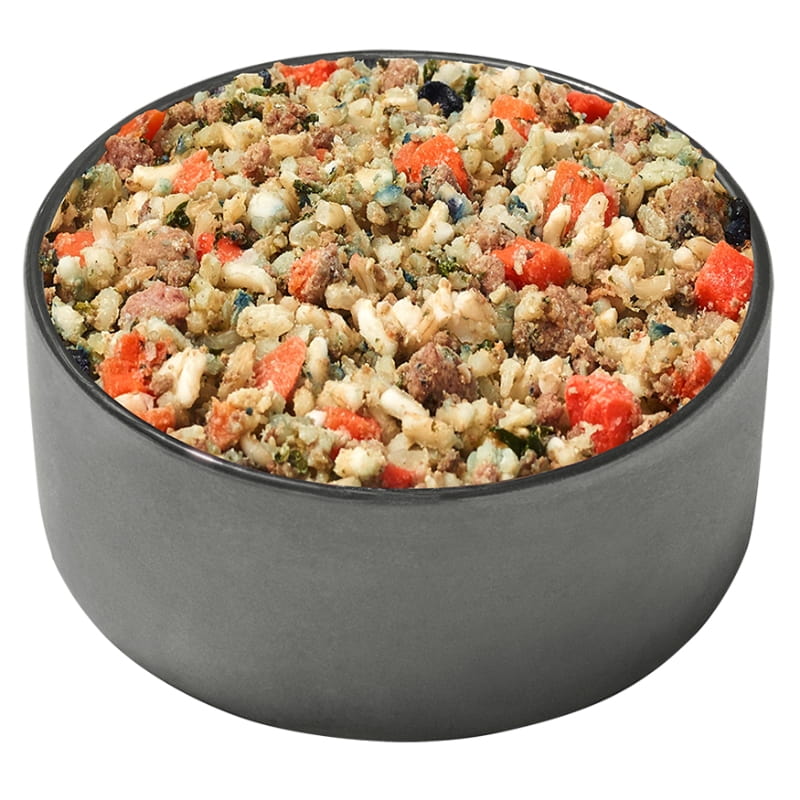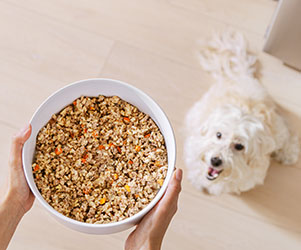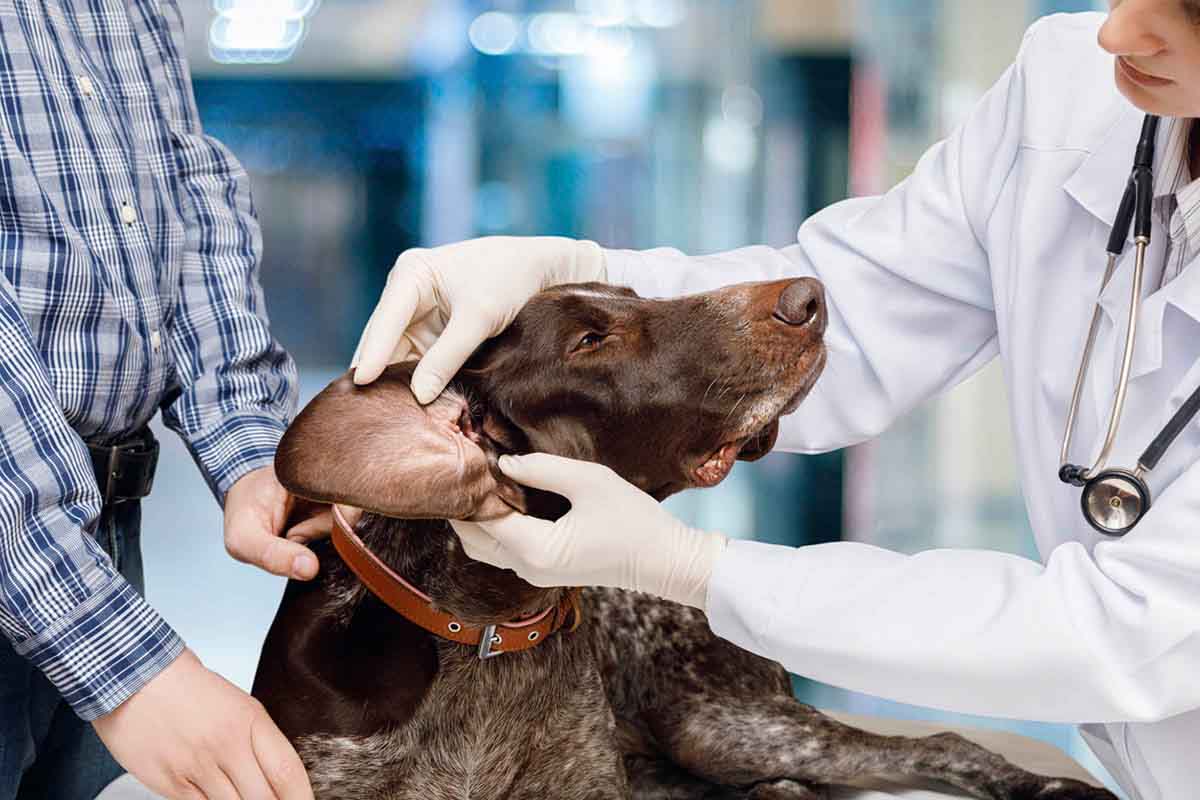Dog Food & Kidney Disease
By understanding the signs and symptoms, we can be more proactive in identifying and managing kidney disease in dogs through the right dog food.
Our furry companions bring so much joy into our lives. As pet parents, we want to do everything we can to keep them healthy and happy. Potential health concerns for dogs include kidney disease and kidney failure, which can affect canines of all ages and breeds. By understanding the signs and symptoms, we can be more proactive in identifying and managing this condition for our pet’s health.
Your Dog’s Kidneys: A Filtration Powerhouse
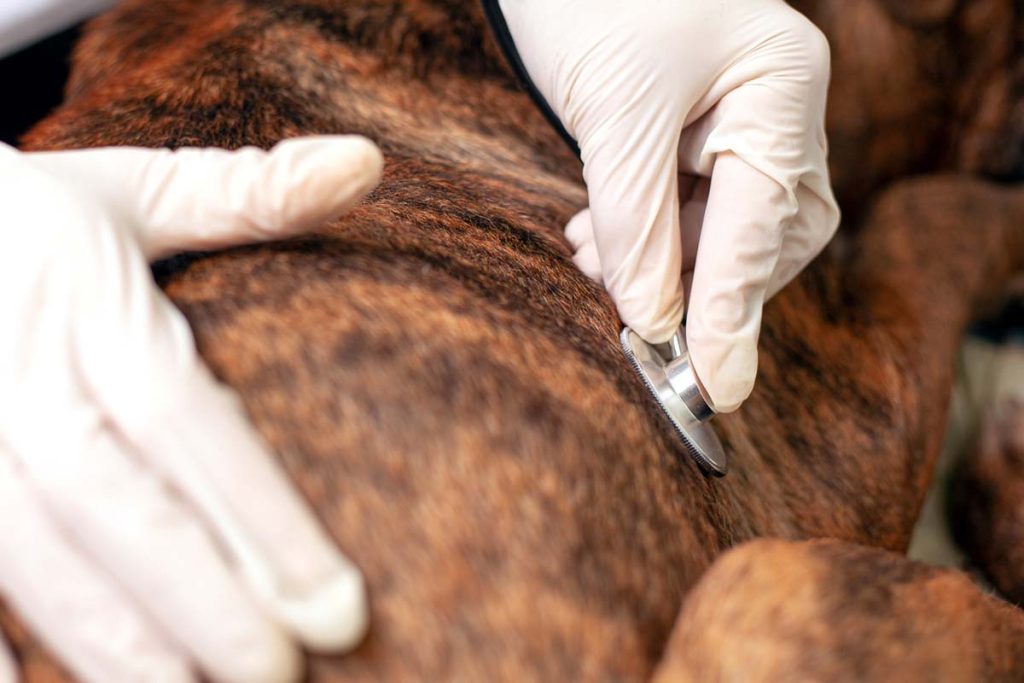
The kidneys are two bean-shaped organs that act as the body’s filtration system. They work tirelessly to remove waste products and toxins from the blood, regulate blood pressure, and produce hormones essential for various bodily functions. In dogs with kidney disease, this filtration process becomes impaired, leading to a buildup of toxins in the bloodstream.
Acute vs. Chronic
There are two main types of renal failure in dogs: acute and chronic.
- Acute kidney disease develops rapidly, often within hours or days. Factors like ingesting toxins, dehydration, or urinary obstruction can cause it.
- Chronic kidney disease (CKD) is a progressive condition where the kidneys gradually lose function over time. CKD is often diagnosed in older dogs, though it can affect younger pups as well.
Spotting the Signs: Early Detection Is Key
The tricky aspect of CKD is that symptoms may not appear until a significant amount of kidney function is already lost. However, some health issues to watch out for include:
- Increased thirst and urination
- Loss of appetite and weight loss
- Lethargy and vomiting
- Bad breath
- Blood in the urine
Working with Your Veterinarian

If you notice any of these signs in your dog, it’s crucial to schedule an appointment with your veterinarian. Early diagnosis and intervention are essential for managing kidney support and improving your dog’s quality of life.
The vet will likely perform a physical examination, blood tests, and urinalysis to assess kidney function. Treatment options may include dietary changes, medications, and fluid therapy. They may refer you to a veterinary nutritionist who can help choose the best pet food for your dog’s condition.
Living with Kidney Disease
While there’s no cure for CKD, with proper management, a kidney diet, and a supportive home environment, many dogs can live happy and fulfilling lives for years after diagnosis.
Here are some tips for supporting your dog with kidney issues:
- Stick to the prescribed diet: A veterinarian-recommended kidney-friendly diet is the best dog food to help regulate levels of phosphorus, protein levels, and reduce stress on the kidneys.
- Maintain hydration: Encourage your dog to drink plenty of water throughout the day.
- Regular veterinary checkups: Schedule regular appointments with your vet to monitor your dog’s condition and adjust treatment as needed according to the progression of kidney disease.
Remember, you are not alone. Online resources and support groups can connect you with other pet owners navigating canine kidney problems. With vigilance, a veterinary diet/new food, love, and proper care, you can help your furry friend live a long and comfortable life despite renal disease.
Further Learning: An Expert’s Take on Managing Kidney Health in Dogs
Dr. Julie Stegeman, DVM, Diplomat American College of Veterinary Internal Medicine of Southern California Veterinary Specialty Hospital, tells us what can be done when your dog or cat is diagnosed with kidney disease.
“The first thing that I always indicate to people when their pet is diagnosed with kidney disease is that research has time and time again indicated that the biggest thing that they can do to impact the length of time that their pet lives, as well as the quality of that time, is to get them onto a kidney-friendly diet.
So no matter what amount of medications and fluid therapy that you’re giving this animal. It’s going to be impacted directly by its ability to metabolize and tolerate the metabolites of the diet that it takes in.
Kidney-Friendly Diets
“The diets need to be lower in protein. They need to be higher in vio-availability. They need to be oftentimes increased in potassium, increased in B vitamins, increased omega-3 fatty acids, low phosphorus. The calcium and phosphorous ratio needs to be addressed.
So that’s pretty complicated. It should also be lower in sodium in most patients because kidney disease patients tend to have high blood pressure. So given all of that, it’s pretty hard to come by that on your own or to go to a grocery store and find a food that’s actually going to fit that criteria and going to taste good.
It’s been taken care of by a number of commercial food companies as prescription diets in both canned and dry forms. And it’s also available through the JustFoodForDogs company in their renal diets. So if somebody wants to do a home cooked diet with more wholesome ingredients and more feel-good ingredients when you read the the package. A more whole food approach then that’s available to them so there’s a lot of available options out there. The biggest thing is get the dog on a diet that will protect their kidneys.”
How To Treat a Cat With Kidney Disease
“The same thing for a cat. The cats definitely need to get into the renal diets. And I’ve had people tell me as soon as they get their pet onto the renal diet, whatever species it is, that suddenly they have a new pet. That the animal has more energy and their coat looks better and they’re just feeling better. It’s again essential to treatment for kidney disease patients to be on a renal diet.”
The Benefits Of a Whole Food Renal Diet
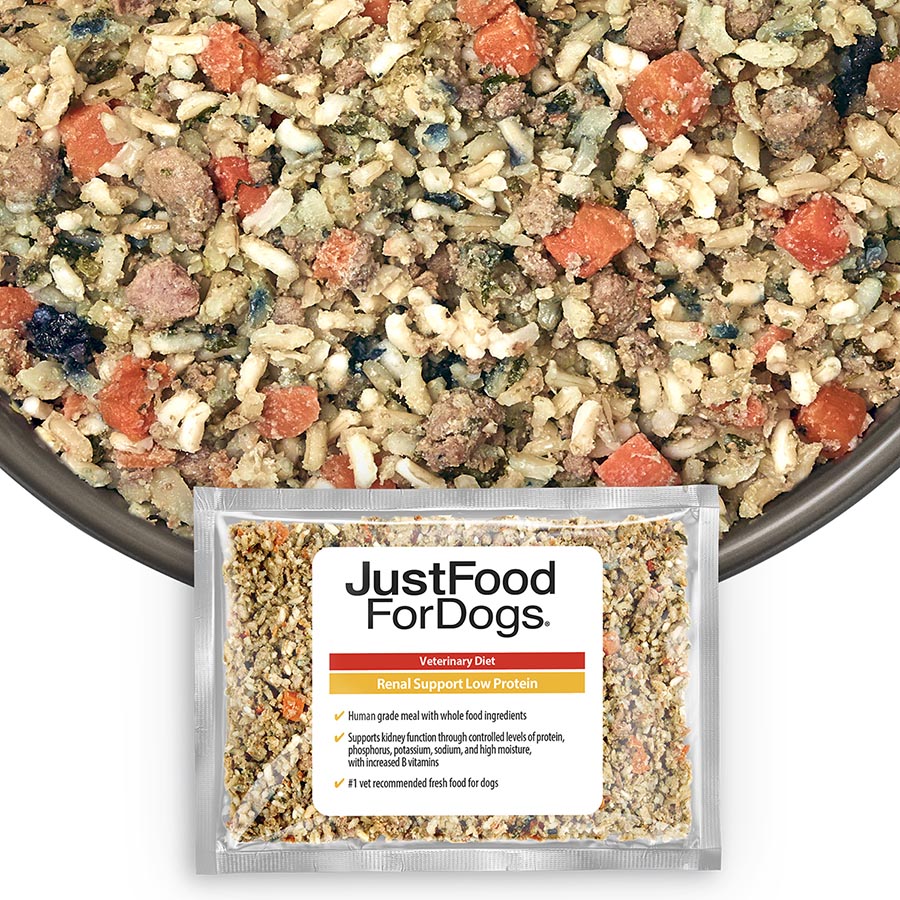
“I would absolutely agree that the JustFoodForDogs renal diet is much more palatable than the canned or kibble commercial diets that are available through prescription diets. Definitely these patients are coming in and they’re nauseous and they’re euremic. They just simply don’t feel well. And when you don’t feel well you’re not going to want to eat your vegetables.
That’s kind of the feeling that I get when you put the bowl of food in front of the dog and they look at it with their slightly nauseous little eyes and look back up at you like ‘really, I’m not going to eat this.’ You might be able to hit the balance in favor of the animal wanting to eat if it’s something that’s a little bit more wholesome and has a better smell and mouth feel and flavor then what you can get out of a can or out of the bag.”
Our Renal Support Low Protein diet is formulated to support your dog’s kidney health with carefully controlled levels of high-quality protein content, phosphorus, potassium, low sodium, omega-3 fatty acids, antioxidants, and an increased amount of B vitamins.
We hand-prepare your dog’s diet in open kitchens using ground lamb, sushi rice, cauliflower, carrots, long-grain brown rice, lamb liver, spinach, and blueberries. And like our other meals and dog treats, it’s free from preservatives.
Ask your veterinarian how our Renal Support dog food diet can help support your dog’s kidney and liver health.
You can learn more about our Renal Support diet here: Renal Support Low Protein Fresh Dog Food
This content is for informational use only and does not replace professional nutrition and/or medical advice, diagnosis, or treatment. It is not a substitute for and should not be relied upon for specific nutrition and/or medical recommendations. Please talk with your veterinarian about any questions or concerns.
